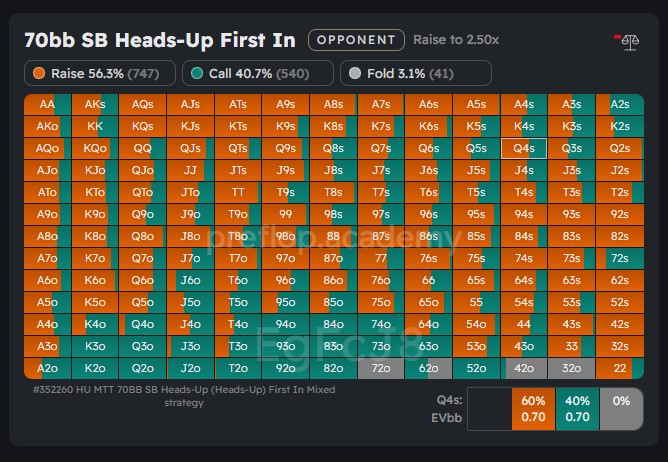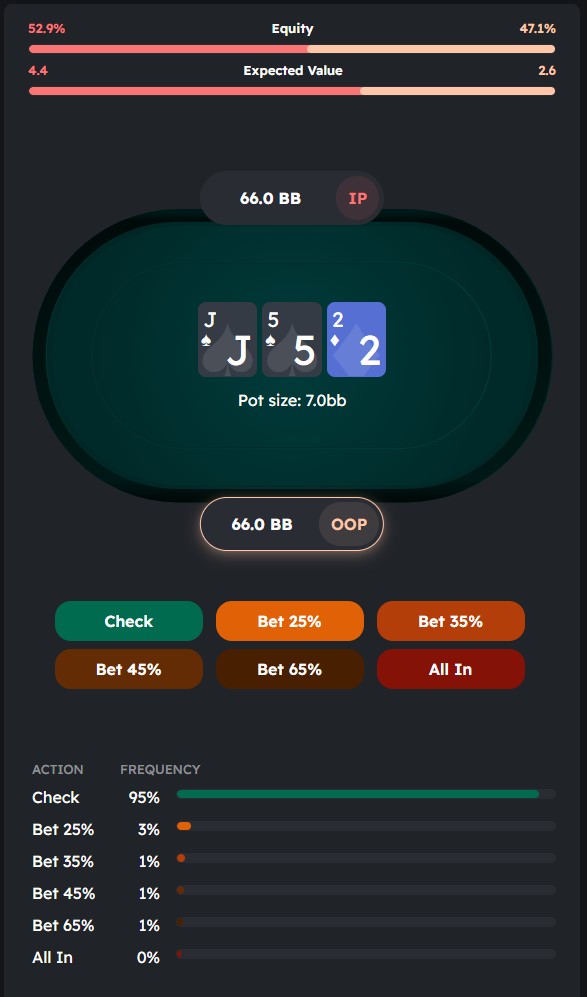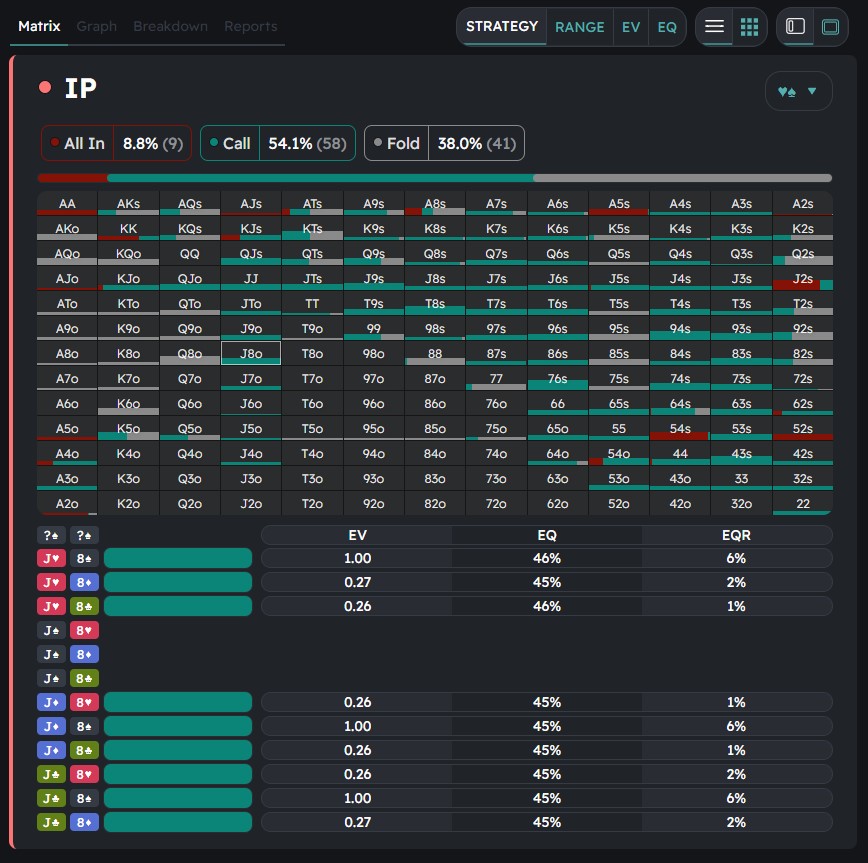After a thrilling battle of wits, the 2023 World Series of Poker Main Event has come to its conclusion with American poker pro Daniel Weinman emerging victorious. Following an intense heads-up match against his compatriot Steven Jones, Weinman finally sealed the victory and was crowned this year’s champion.
To commemorate this remarkable achievement, we are having a deeper look into the final hand and analyzing it using Poker Academy. Let’s see what we can discover!
What happened preflop?
The blinds were: 1M/2.5M and Daniel Weinman was firmly in the lead. He had 430M to his opponent’s 170M. So let’s call it a 70bb effective scenario.
Steven Jones was first to act and made an open raise to 7M with Jc8d. Weinman picked up KcJd and made a smooth call from the BB. This is what the ranges of the two players would look like if we were to set up the appropriate parameters in PokerAcademy’s pre-flop module.


There is not much to say here. Both players played in a standard and correct manner.
The flop: Weinman check-raises his opponent
The flop came: Js5s2d and the pot was 16.5M.

We set up the parameters and after a few seconds we got a solution of the very first node. Player OOP should mainly check. It’s almost 95% so we can probably simplify to a range check. Daniel Weinman also decided to check.
We move to the second node, the action is on Steven Jones. He elected to make a C-bet for 6M. So far, so good. Betting more often than not seems to be a very sensible approach. Jones has a moderate range advantage. Of course, checking is also fine, as both plays have the same EV. Had we removed other sizes and forced the solver to use a bet of 30-40% PSB or check, it would be 50/50 in terms of frequencies.

The action went back to Weinman. He decided to raise it to 18M. We love this play. He has the strongest possible hand containing a jack in this situation and around 80% equity, so it looks almost like a mandatory raise.

Jones may not have much of a choice here. Only the call makes sense.
The deciding street
The pot is 53.5M, or just over 25bb. The players are about 58bb behind. In our simulation, it looks like this. The turn is 4c.

Weinman continiued his aggression and bet out 38M. The only thing worth noting is that with this amount of EQ (73%) and this particular combination (KcJd) that does not block draws to the flush, the solver will almost always bet and is even willing to play for stacks here.

After several minutes of thorough consideration, Jones decided to go all in. Let’s see if this was the right move.

It looks like a blunder. Don’t get us wrong, we’re not criticising Jones’ play because we know the optimal GTO solution. We think his play is questionable for a specific reason: He made a very bold move with medium equity hand.
What are the consequences of such a play? In most cases, our opponents will call us with hands that beat us and fold the ones that we beat. So by going all-in with an average equity hand, we gain almost nothing. At best, we deny him some equity. But let’s be realistic, what we’re doing here is neither value betting nor bluffing, so from a purely theoretical standpoint—and that’s probably the one we should take here—this looks like a big polarisation error.
The closing action is still the node, in which Daniel Weinman has to decide whether to call an all-in. As you can see, the solver calls most of the time. And he never folds a top pair or a strong draw/combo draw.

Epilogue
Weinman called. When the river held the safe ace, he was declared the winner of the 2023 WSOP Main Event.

